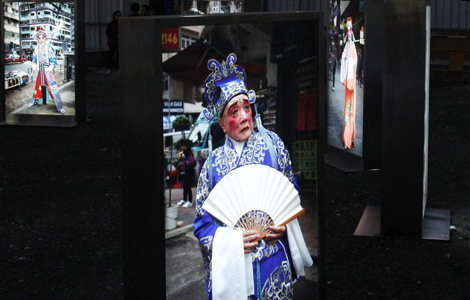Beijing begins PM2.5 measure of air quality
Updated: 2012-01-21 15:56
(Xinhua)
|
|||||||||||
BEIJING - Beijing's environment authority on Saturday launched the much-anticipated PM2.5 measure of air quality, fulfilling its promise of publishing the data ahead of the Spring Festival holiday, which starts on Sunday.
The Beijing Environment Protection Monitoring Center said its monitoring station at the city's second ring road had detected 0.003 micrograms of PM (particular matter) 2.5 per cubic meter, suggesting the air quality is good.
The PM2.5 gauge is considered stricter than Beijing's previous standard of PM10, as it monitors "fine" particles 2.5 microns or less in diameter.
A fierce online public debate on PM2.5 and PM10 began at the end of 2011 when it came to light that air-quality monitoring results released by Beijing's weather forecast station and the US Embassy in Beijing often differed.
On Saturday, the embassy's air-quality rating also suggested the air is "good."
Zhao Yue, deputy head of the Beijing Environment Protection Monitoring Center, said cold air from Friday helped blow away "hazardous" pollution persisting in the air due to week-long smoggy weather.
However, he pointed out Saturday's PM2.5 reading can only vouch for air quality in Xicheng district, where the city's only PM2.5 monitoring station was set up.
He said local authorities plan to build a citywide network of PM2.5 monitoring stations by the end of this year.
Zhao did not give the exact number of stations to be built. But the city currently has set up 27 PM10 monitoring stations to provide real-time data covering in the whole city.
Yu Jianhua, an air official with the Beijing Environmental Protection Bureau, said the city government has spent 10 years taking aggressive air pollution control measures, including eliminating heavy-polluting vehicles and using clean energy for heating, in the hope of meeting the national PM10 standard of 100 micrograms per cubic meter of air. However, the average PM10 reading last year still hung at 120 micrograms.
Although the national standard on classifying the PM2.5 reading has yet to come out, public hearings by China's environment ministry earlier this month suggested the future national PM2.5 standard may be set at 35 micrograms per cubic meter of air on average a year.
Yu said PM2.5 on average accounts for less than half of the PM10 concentrations. It means, under the present air-quality conditions, Beijing's average PM2.5 rating could not meet the pending national standard.
He said research showed that 50 percent of the total PM2.5 particles in the air are contributed by automobile exhausts, and another 23 percent are brought by floating dust.
Beijing's geological situation means that air pollution is likely. The city sits in a plain area surrounded by mountains in three sides, Yu explained.
He said the municipal government has laid down a series of measures to tighten air-pollution control. Among them, a primary target is to introduce a Euro 5 emission standard to replace the current Euro 4 by the end of the year pressuring auto makers to upgrade products to reduce emission discharge.
Beijing has 5 million vehicles on road, meaning urban traffic is very congested. Experts say vehicle emissions contain more fine particles when automobiles drive at low speed.
Hot Topics
Kim Jong-il, Mengniu, train crash probe, Vaclav Havel, New Year, coast guard death, Internet security, Mekong River, Strait of Hormuz, economic work conference
Editor's Picks

|

|

|

|

|

|







